
2 The I.A. Gagarin Youth Centre in Chișinău, Moldova, was inaugurated in 1972 as a prominent hub for youth and cultural activities during the Soviet era. Funded through weekend labour initiatives by Komsomol members—the youth division of the Communist Party—the centre featured an 800-seat auditorium, a 400-seat theatre, sports facilities, a disco, and a hotel designated for foreign guests. Notably, it hosted workshops, including one where the Soviet Union's first energy-saving lamp was reportedly developed. The building's façade is adorned with the striking "Plowman of the Universe" mosaic by artist Aurel David, exemplifying socialist modernist art. Following the Soviet Union's dissolution in the early 1990s, the centre fell into disuse and now stands as one of Moldova's most significant abandoned structures, with plans for its demolition to make way for residential development
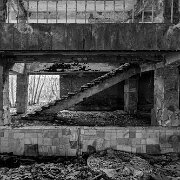
3 The I.A. Gagarin Youth Centre in Chișinău, Moldova, was inaugurated in 1972 as a prominent hub for youth and cultural activities during the Soviet era. Funded through weekend labour initiatives by Komsomol members—the youth division of the Communist Party—the centre featured an 800-seat auditorium, a 400-seat theatre, sports facilities, a disco, and a hotel designated for foreign guests. Notably, it hosted workshops, including one where the Soviet Union's first energy-saving lamp was reportedly developed. The building's façade is adorned with the striking "Plowman of the Universe" mosaic by artist Aurel David, exemplifying socialist modernist art. Following the Soviet Union's dissolution in the early 1990s, the centre fell into disuse and now stands as one of Moldova's most significant abandoned structures, with plans for its demolition to make way for residential development
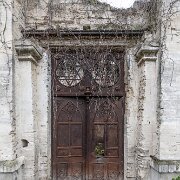
4 The Jewish Funeral Hall in Chișinău, Moldova, stands as a poignant remnant of the city's once-thriving Jewish community. Constructed in the early 20th century, the hall was part of the larger Chișinău Jewish cemetery complex and served as a sacred space where families could perform traditional rites and rituals before burial. The building is notable for its Neo-Moorish architectural style, a design choice reflecting the cultural richness of the Jewish diaspora in Eastern Europe. The funeral hall bore witness to both the flourishing of Jewish life and the tragedies that befell the community, including the devastating pogroms of 1903 and 1905. During the Soviet era, the cemetery and its buildings suffered from neglect, and many structures were damaged or destroyed. Today, the funeral hall, though in a fragile state, is recognized for its historical and cultural significance, representing both the memory of the Jewish community in Chișinău and the broader narrative of Jewish history in Moldova.
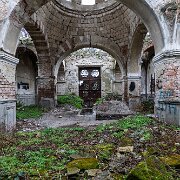
5 The Jewish Funeral Hall in Chișinău, Moldova, stands as a poignant remnant of the city's once-thriving Jewish community. Constructed in the early 20th century, the hall was part of the larger Chișinău Jewish cemetery complex and served as a sacred space where families could perform traditional rites and rituals before burial. The building is notable for its Neo-Moorish architectural style, a design choice reflecting the cultural richness of the Jewish diaspora in Eastern Europe. The funeral hall bore witness to both the flourishing of Jewish life and the tragedies that befell the community, including the devastating pogroms of 1903 and 1905. During the Soviet era, the cemetery and its buildings suffered from neglect, and many structures were damaged or destroyed. Today, the funeral hall, though in a fragile state, is recognized for its historical and cultural significance, representing both the memory of the Jewish community in Chișinău and the broader narrative of Jewish history in Moldova.
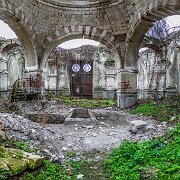
6 The Jewish Funeral Hall in Chișinău, Moldova, stands as a poignant remnant of the city's once-thriving Jewish community. Constructed in the early 20th century, the hall was part of the larger Chișinău Jewish cemetery complex and served as a sacred space where families could perform traditional rites and rituals before burial. The building is notable for its Neo-Moorish architectural style, a design choice reflecting the cultural richness of the Jewish diaspora in Eastern Europe. The funeral hall bore witness to both the flourishing of Jewish life and the tragedies that befell the community, including the devastating pogroms of 1903 and 1905. During the Soviet era, the cemetery and its buildings suffered from neglect, and many structures were damaged or destroyed. Today, the funeral hall, though in a fragile state, is recognized for its historical and cultural significance, representing both the memory of the Jewish community in Chișinău and the broader narrative of Jewish history in Moldova.

7 The Jewish Cemetery in Chișinău, Moldova, is one of the oldest and most significant Jewish burial sites in the region, with its origins dating back to the 18th century. Serving as a final resting place for generations of the city’s Jewish community, it reflects the once-thriving Jewish presence in Chișinău, which was a major center of Jewish life in Eastern Europe. The cemetery contains thousands of graves, including those of prominent rabbis, scholars, and community leaders. Over the years, it has endured damage and neglect, particularly during the Soviet era and the Holocaust, when the Jewish population suffered devastating losses. In recent years, efforts have been made to preserve and restore the cemetery as a cultural and historical landmark, honoring the legacy of Chișinău’s Jewish heritage.
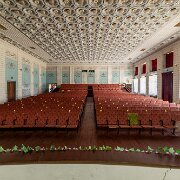
18 The Centrul Cultural, or House of Culture, in Ciuciulea, Moldova, serves as a pivotal institution for the village's cultural and social life. Located in the Glodeni district, this community center functions as a venue for various events, including performances, gatherings, and educational activities. It stands as a testament to the village's commitment to preserving and promoting local traditions and fostering community engagement. While specific architectural details are limited, the center's role in the community underscores its importance as a hub for cultural expression and social interaction.
In recent years, Ciuciulea has gained recognition for its dedication to the arts, particularly through the annual international wood sculpture workshop titled "Ciuciulea, precincts of legends and mystery." Initiated in 2021 with support from the United Nations Development Programme and local authorities, this event brings together renowned sculptors from Moldova and abroad to create oak wood sculptures that are permanently displayed in the village's leisure park. This initiative not only enhances the village's aesthetic appeal but also solidifies its status as a cultural destination, attracting tourists and art enthusiasts alike.
In recent years, Ciuciulea has gained recognition for its dedication to the arts, particularly through the annual international wood sculpture workshop titled "Ciuciulea, precincts of legends and mystery." Initiated in 2021 with support from the United Nations Development Programme and local authorities, this event brings together renowned sculptors from Moldova and abroad to create oak wood sculptures that are permanently displayed in the village's leisure park. This initiative not only enhances the village's aesthetic appeal but also solidifies its status as a cultural destination, attracting tourists and art enthusiasts alike.
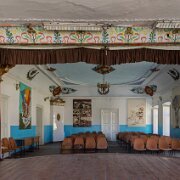
19 The Centrul Cultural, or House of Culture, in Ciuciulea, Moldova, serves as a pivotal institution for the village's cultural and social life. Located in the Glodeni district, this community center functions as a venue for various events, including performances, gatherings, and educational activities. It stands as a testament to the village's commitment to preserving and promoting local traditions and fostering community engagement. While specific architectural details are limited, the center's role in the community underscores its importance as a hub for cultural expression and social interaction.
In recent years, Ciuciulea has gained recognition for its dedication to the arts, particularly through the annual international wood sculpture workshop titled "Ciuciulea, precincts of legends and mystery." Initiated in 2021 with support from the United Nations Development Programme and local authorities, this event brings together renowned sculptors from Moldova and abroad to create oak wood sculptures that are permanently displayed in the village's leisure park. This initiative not only enhances the village's aesthetic appeal but also solidifies its status as a cultural destination, attracting tourists and art enthusiasts alike.
In recent years, Ciuciulea has gained recognition for its dedication to the arts, particularly through the annual international wood sculpture workshop titled "Ciuciulea, precincts of legends and mystery." Initiated in 2021 with support from the United Nations Development Programme and local authorities, this event brings together renowned sculptors from Moldova and abroad to create oak wood sculptures that are permanently displayed in the village's leisure park. This initiative not only enhances the village's aesthetic appeal but also solidifies its status as a cultural destination, attracting tourists and art enthusiasts alike.

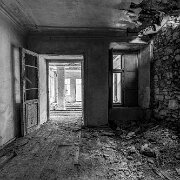
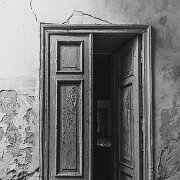
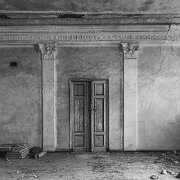
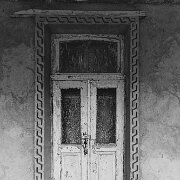
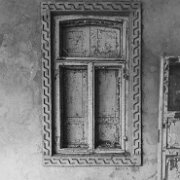




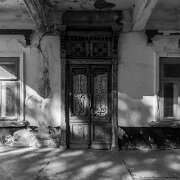

Other